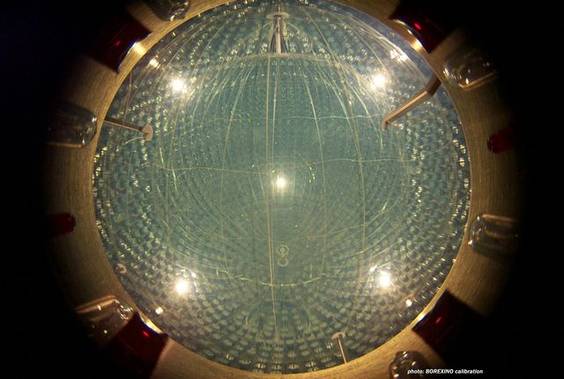22.04.2013
Scientists assess the radioactive signal of the Earth’s mantle
From a long-term measurement of geo-neutrinos at the neutrino detector Borexino, scientists have assessed the radioactive signal of the long-lived elements uranium and thorium in the Earth’s mantle. The result contributes to a better understanding of the terrestrial heat.
Physicists have long been studying neutrinos emitted by the sun or generated by cosmic rays entering the Earth's atmosphere. These observations have improved the understanding of solar physics and shown that neutrinos - uncharged, weakly interacting elementary particles - carry a tiny mass. But neutrinos are also released within the Earth. They are produced in beta decays of long-lived radioactive elements, especially of thorium and uranium. These geo-neutrinos pass almost unattenuated through all layers of the Earth and therefore allow conclusions on the total radioactive heat generated in the Earth's interior.
To detect solar and geo-neutrinos, international scientists strongly supported by researchers from the Technische Universität München have developed the instrument Borexino in the Italian Gran Sasso underground laboratory. In the data collected between December 2007 and August 2012, 14 geo-neutrino have been indentified. Taking into account the local geology and models of the Earth's crust, the physicists have been able to filter out the radioactive signal of thorium and uranium and assess its contribution to the terrestrial heat.
„For the first time, with Borexino in Italy and KamLAND in Japan two independent geo-neutrino detectors placed in different sites around the planet give the same constraints on radiogenic heat power of the Earth due to the decays of Uranium and Thorium, says Prof Stefan Schönert from the Technische Universität München and Principal Investigator at the Excellence Cluster Universe. „The new results from Borexino mark a breakthrough for the Earth Sciences and in particular for the comprehension of the origin and thermal evolution of the Earth.”
Further Information
Original publication






